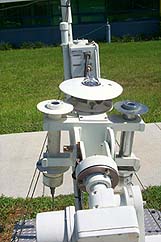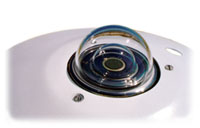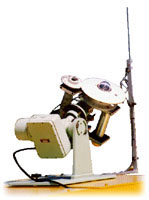|
|
|
Radiation Station
Information Monitors collects radiation data to support its activities in Cocoa, Florida
(28.4 N, 80.8 W). Eighteen years of data are available from our previous station in Cape Canaveral,
FL, and since 1995 at our current site. Please note that this is
research data, being collected automatically every 6-minutes. We attempt to keep the data as
accurate as possible but we make no waranty on the accuracy of this data.
|
 |
Data Acquisition System
A Campbell CR10 data logger is used to sample all transducers at 10 second interval. The measurements are averaged
over 6-minutes interval and stored in the data logger. An automated process on the central computer system
runs every 6 minutes, retrieving, processing, and storing the data into a database. Multiple reports used by
various applications are also automatically generated . The following measuerments are recorded at this site:
- Total horizontal solar radiation
- Total solar radiation on a tilted plane
- Direct normal solar radiation
- Total normal solar radiation
- Total horizontal infrared sky radiation
The radiation sensors are class 1 instruments manufactured by Eppley
Laboratories. The Precision Spectral Pyranometer (PSP) is used for total
radiation, the Normal Incident Pyrheliometer (NIP) for direct normal, and
the Precision Infrared Radiometer (PIR) for infrared sky radiation. All
solar radiation sensors (PSP and NIP) are calibrated annually by comparison
with model H-F absolute cavity radiometer. The absolute cavity itself
has participated in the New River Intercomparison of Absolute Cavity Solar
Pyrheliometers (NRIP VII) and the First Regional Pyrheliometric Intercomparison,
providing traceability of the NOAA primary reference standard and the World
Meteorological Organization working standard group.
 |
Solar Radiation
The instrument used to measure solar radiation is called a pyranometer.
It consists of a blackened disk containing temperature measuring sensors.
The disk is protected from the environment by two domes of glass. When
exposed to the sun, the disk heats up. The glass domes prevent cooling
by the wind. The temperature of the disk is a function of the amount of
solar radiation hitting it. Calibration against more sophisticated radiation
measuring devices gives a repeatable multiplier to convert the pyranometer's
output to units of solar radiation. |
Direct Solar Radiation
| Direct normal solar radiation is that part of the radiation
coming directly from the sun without bouncing off clouds or the atmosphere.
This measurement gives an indication of the clearness of the sky. It is
also measured for researching concentrating solar collectors which can
utilize only this portion of the solar radiation. The instrument used to
measure Direct Normal solar radiation is called a normal incidence pyrheliometer
(NIP). A NIP consists of a long tube placed over the sensing element of
a pyranometer. The tube blocks out all solar radiation except that coming
directly from the sun. This instrument must track the sun such that the
sun is always shining directly down the tube. A tracker called an equatorial
mount is used to keep the NIP pointed at the sun. To measure the total
amount of available solar radiation, a pyranometer is also mounted on the
tracker. The difference between the pyranometer and the NIP is called the
diffuse solar radiation. |
 |
|

|
|


